
Sphalerite Gemstone: Nneɛma, Nkyerɛase, Botae & Nea Wɔde Di Dwuma
 Sphalerite aboɔden abo yɛ zinc sulfide ɔbo a ɛwɔ kɔla ahorow pii nanso mpɛn pii no osutɔbere mu kɔla ahorow a ɛyɛ borɔdɔma, bruu, ne kɔkɔɔ. So sphalerite yɛ aboɔden abo ? Aane! Bere a abu so kɛse wɔ nneɛma a ɛnyɛ aboɔden abo a wɔde di dwuma mu no, sphalerite a ɛte sɛ aboɔden abo betumi anya nea ɛda adi pefee na ɛyɛ ogya te sɛ daimond.
Sphalerite aboɔden abo yɛ zinc sulfide ɔbo a ɛwɔ kɔla ahorow pii nanso mpɛn pii no osutɔbere mu kɔla ahorow a ɛyɛ borɔdɔma, bruu, ne kɔkɔɔ. So sphalerite yɛ aboɔden abo ? Aane! Bere a abu so kɛse wɔ nneɛma a ɛnyɛ aboɔden abo a wɔde di dwuma mu no, sphalerite a ɛte sɛ aboɔden abo betumi anya nea ɛda adi pefee na ɛyɛ ogya te sɛ daimond.
So sphalerite ho yɛ na anaasɛ ɛtaa ba? Sɛ́ aboɔden abo no, sphalerite abu so yiye — sulfide mineral a abu so sen biara no mu biako, nokwarem no. Nanso, sphalerite a ɛyɛ papa a ɛwɔ anim no ho yɛ na na ɛyɛ nwonwa wɔ aboɔden abo mu.
Wɔ saa asɛm yi mu no, wubehu biribiara a ɛsɛ sɛ wuhu fa sphalerite aboɔden abo no ho, efi ne mineral ne ayaresa tumi so kosi ne bo ne ne fibea so.
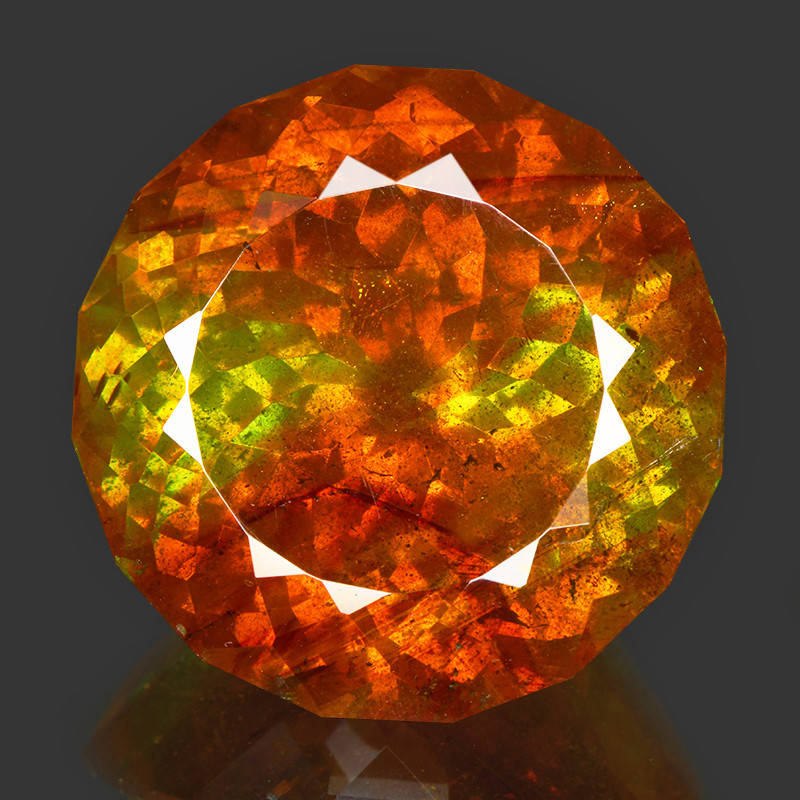
Ɛfa Sphalerite Ɔbo ho
Wonim sphalerite mineral, anaa “zinc blende” no kɛse sɛ ɛyɛ zinc fibea a ɛho hia. Nokwarem no, wiase no mu zinc bɛyɛ ɔha biara mu nkyem 95 fi sphalerite mu!
Sɛ́ ɔbo a ɛsom bo fã bi no , wɔdɔ sphalerite esiane ne kɔla ahorow ne ne pete kɛse nti . Dispersion yɛ hann a ɛdannan bi a hann fitaa mu paapae yɛ kɔla ahorow pii, na ɛma kɔla ahorow pii hyerɛn. Wɔn a wɔn ani gye aboɔden abo ho dodow no ara de apete a ɛyɛ nwonwa bata daimond ho , nanso sphalerite apete no boro so mmɔho abiɛsa!
Wɔ nsoromma mu hwɛ mu no, sphalerite yɛ nsoromma mu hwɛ bo ma Gemini. Sphalerite kɔkɔɔ nso betumi ayɛ nea ne bo nyɛ den a wɔde besi ruby a ɛyɛ July awobo a wɔde di dwuma wɔ amanne kwan so no ananmu .

Sphalerite Nkyerɛkyerɛmu & Su ahorow
“Sphalerite” betumi akyerɛkyerɛ aboɔden abo kuw bi anaa aboɔden abo biako a ɛwɔ saa kuw no mu. Enti, dɛn na wɔde yɛ sphalerite? Ɛsono sɛnea ɛte.
Sphalerite aduru titiriw ne zinc, dade, ne sulfide, na mpɛn pii no dade a ɛwɔ mu no nnu ɔha biara mu nkyem 25 nanso ɛtɔ mmere bi a ɛkɔ soro kodu ɔha biara mu nkyem 40. Dade dodow a ɛsonosonoe betumi asesa sphalerite kɔla, sɛnea ɛda adi, sɛnea ɛhyerɛn, ne sɛnea ɛbɔ.
Efĩ wɔ hɔ bere nyinaa, mpɛn pii no cadmium, mercury, ne manganese. Ebia wubehu gallium, indium, ne germanium efĩ nso, ne afoforo. Mpɛn pii no, nneɛma nketenkete anaa aboɔden abo na ɛkyerɛ sphalerite kɔla.
Twinning abu so wɔ sphalerite nhyehyɛe mu. Sphalerite pseudomorphs nso betumi anya ahwehwɛ nhyehyɛe a ɛyɛ aboɔden abo a ɛte saa ara te sɛ calcite anaa galena.
Wubetumi ahu sphalerite denam ne mpaapaemu a edi mũ a ɛwɔ afã asia, ɛhyerɛn, ne ne nsensanee so. “Streak” kyerɛ kɔla a ɛwɔ mineral’s powder mu bere a wɔaprapra no wɔ streak plate so te sɛ porcelain a wɔmfa glazed nhyɛ mu akyi.
Sphalerite nsensanee no taa yɛ fitaa, kɔkɔɔ-biribiri, anaa kɔkɔɔ na ɛyɛ huam te sɛ sulfur. Sphalerite hyerɛn taa sesa ka sɛnea ɛda adi pefee no ho. Aboɔden abo a ɛyɛ mmerɛw yɛ adamantine, bere a aboɔden abo a ɛyɛ translucent anaa opaque yɛ dull kosi resinous.
Wobɛhunu sphalerite no su nyinaa wɔ aseɛ ha:
Aboɔden abo abusua: Sphalerite kuw
Nneɛma a wɔde yɛ: Zinc sulfide; (Zn, Fe) (Zn, Fe) na ɛyɛ S
Mohs denden : 3.5-4
Kɔla : Mpɛn pii no, ɛyɛ bruu, kɔkɔɔ, anaa tuntum; Ebetumi ayɛ kɔkɔɔ, fitaa-blue, ahabammono, kɔkɔɔ-akutu, kɔkɔɔ, anaa nea enni kɔla
Ahwehwɛ nhyehyɛe : Cubic/Isometric
Luster : Ɛyɛ dull, ɛyɛ resinous, anaa adamantine
Transparency : Ɛyɛ nea ɛda adi pefee kosi nea ɛda adi pefee; Opaque a dade pii wom
Nneɛma a ɛma nneɛma yɛ mmerɛw : 2.37-2.50
Nnipa dodow : 3.90-4.20
Cleavage : Dodecahedral a ɛyɛ pɛ (wimhyɛn asia) wɔ [011] so.
Fracture : Ɛnyɛ pɛpɛɛpɛ kosi conchoidal
Streak : Ɛyɛ bruu-fitaa, kɔkɔɔ a ɛyɛ hann, fitaa, anaa kɔkɔɔ-biribiri; Sulfur hua a ɛba bere ne bere mu bere a wɔresɔ streak sɔhwɛ no
Luminescence : Ɛtaa yɛ fluorescent wɔ borɔdɔma-kɔkɔɔ a ɛhyerɛn kosi kɔkɔɔ mu; Ɛtɔ mmere bi a, triboluminescent (ɛhyerɛn wɔ friction ase) .

Sphalerite Ahorow ahorow
Aguadi din pii wɔ hɔ a wɔde frɛ sphalerite ahorow ahorow. Momma yɛnkyekyɛ wɔn mu:
Black-Jack : Abodin a wɔde frɛ abo a ɛnyɛ hann na ɛyɛ tuntum
Cleiophane : Franklin, New Jersey aduru a ɛyɛ mmerɛw, enni kɔla kosi ahabammono a ɛyɛ hann a ɛwɔ borɔdɔma ne bruu a ɛyɛ den a ɛhyerɛn
Golden Sphalerite : Ɛyɛ kɔkɔɔ kosi borɔdɔma ahorow
Marmatite/Christophite : Opaque, tuntum ahorow a efi Colombia Marmato a wotu anaa Germany St. Christoph a wotu mu
Ruby Blende/Ruby Zinc : Aguadi din a wɔde frɛ sphalerites a ɛyɛ bruu-kɔkɔɔ, kɔkɔɔ, anaa borɔdɔma
Rosin Jack : Kɔla kɔkɔɔ anaa amber-kɔla ahorow; Wɔsan frɛ no rosin zinc, rosin blende, anaa resin jack
Wunim mineral ahorow no, nanso dɛn ne metaphysical su ahorow a ɛwɔ sphalerite mu? Momma yɛmfa ne honhom fam ntease mfi ase.

Sphalerite Nkyerɛase & Abakɔsɛm
Sphalerite yɛ akokoduru, ahoɔden, ne ogyaframa ho sɛnkyerɛnne. Wɔ elements ho no, sphalerite yɛ ogya ne asase bo nyinaa.
Sɛ́ ogya ne asase bo no, sphalerite yɛ “nan wɔ fam, ti wɔ mununkum mu” adwene no. Saa ahwehwɛ yi kanyan ahoɔden ne adwene bere a ɛma wokɔ so tra fam na esiw ɔhyew ano no. Saa abien ne kari pɛ yi yɛ ade foforo nti a sphalerite yɛ pɛpɛɛpɛ ma Geminis!
Germanni aboɔden abo ho ɔbenfo Ernst Friedrich Glocker na odii kan huu sphalerite wɔ aban kwan so wɔ 1847. Glocker paw din no fii Hela asɛmfua sphaleros , a ɛkyerɛ “nnaadaa” anaa “daadaa” no akyi, efisɛ na aboɔden abo no te sɛ galena (kɔbere fibea a ɛsom bo) nanso na kɔbere nni mu. Nea ɛka ho no, na sphalerite te sɛ abo afoforo pii, na na ɛyɛ den sɛ wobehu.
Ansa na Glocker reba no, na aboɔden abo no de din te sɛ “zincum” anaa “blende.” Germanni aboɔden abo ho ɔbenfo Georgius Agricola paw edin “blende” wɔ 1546 mu, na wɔn a wotu fam no mu dodow no ara de saa din yi dii dwuma kosii sɛ Glocker bae.
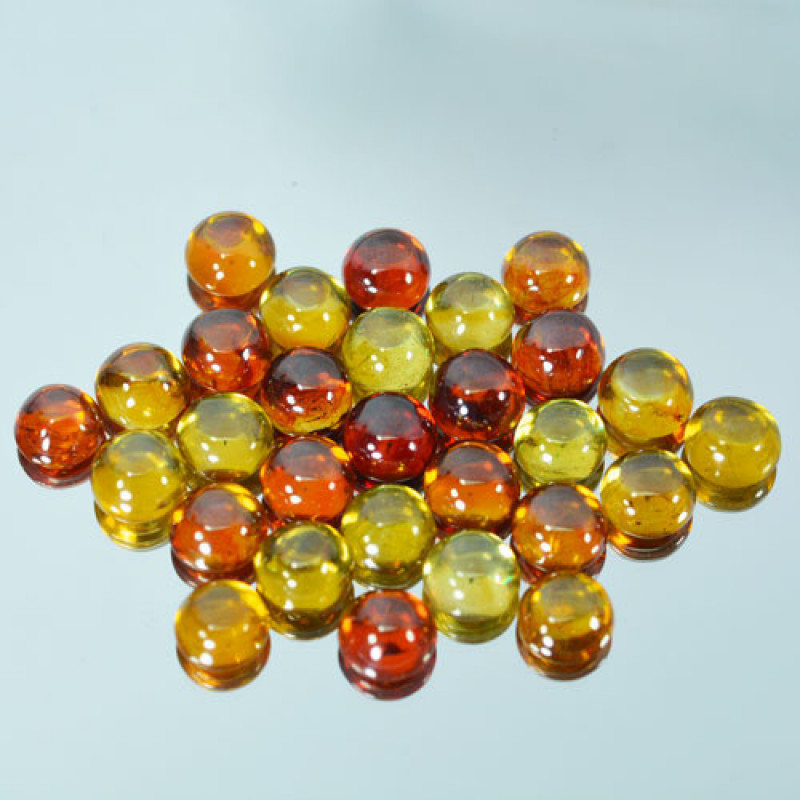
Nneɛma a Ɛnyɛ Aboɔden abo a Wɔde Di Dwuma
Sphalerite a wɔde di dwuma sɛ aboɔden abo no fi afeha a ɛto so 7 Y.B. Kɔbere nneɛma a efi Mfinimfini Mmere no mu nhwehwɛmu kyerɛ sɛ Nkramofo a wɔwɔ saa bere yi mu de sphalerite yɛɛ kɔbere. Nea ɛka ho no, adanse bi kyerɛ sɛ ebia na sphalerite yɛ adwinnade a wɔde sim kɔbere wɔ afeha a ɛto so 12 kosi 13 mu wɔ China.
Mprempren, ɔkwan bɛn so na wɔde sphalerite di dwuma wɔ da biara da asetra mu?
Zinc a wonya fi sphalerite mu no ho hia ma dade te sɛ kɔbere anaa kɔbere na wɔde kata dade ne dade (galvanized metal) so na amma ansɛe. Wɔde sphalerite nso yɛ abantenten a wɔde fa anyinam ahoɔden nhama (a ɛboa anyinam ahoɔden nhama), kar, ne batere.
Zinc ho hia wɔ nnuruyɛ mu nso. Element no betumi aboa yɛn nipadua mu tumi a ɛko tia nyarewa no ma ako atia mmoawa na abɔ yɛn honam ani ho ban afi owia UV mframa a epira ho.
Zinc da nkyɛn a, element efĩ afoforo a abu so wɔ sphalerite mu no ho wɔ mfaso ma mfiridwuma. Biako ne indium a wɔde di dwuma wɔ telefon a wokura kyin so. Foforo nso ne germanium a wɔde yɛ telefon a wokura kyin batere, circuitry, vibration parts, ne LED displays.
Yɛaka mfiridwuma mu nneɛma a wɔde di dwuma ho asɛm, nanso dɛn na wɔde sphalerite di dwuma wɔ ayaresa mu?
Sphalerite Ayaresa Nneɛma
Aboɔden abo kɔla ne ne wosow betumi ama ayɛ ahwehwɛ a ano yɛ den a ɛsa yare . Esiane sɛ ɔbo no kɔla ahorow ahorow nti, sphalerite metaphysical su ahorow dɔɔso.
Sphalerites pii yɛ bruu, na ɛka aboɔden abo afoforo a ɛyɛ bruu ho wɔ ahobammɔ, ahotɔ, ne abusuabɔ a ɛda wɔne Asase Maame ntam no mu. Aboɔden abo kɔkɔɔ te sɛ sika kɔkɔɔ sphalerite ma anigye ne adwene a wɔde si biribi so.
So sphalerite betumi ayɛ kɔkɔɔ? Ɛntaa nsi, nanso yiw. Dɛn na sphalerite a ɛyɛ kɔkɔɔ yɛ? Te sɛ aboɔden abo a ɛyɛ kɔkɔɔ nyinaa , saa ahwehwɛ yi ma nyansa ne honhom mu nhumu yɛ kɛse.
Momma yɛnhwɛ sɛnea wɔde sphalerite bedi dwuma de ayɛ honam fam, nkate fam, ne chakra ayaresa!
Nipadua mu Ayaresa
Ebia nea ɛka ho ne nipadua mu mfaso a ɛwɔ sphalerite so sɛ ɛbɛboa nipadua no mu tumi a ɛko tia nyarewa ne ntini a ɛma nipadua no yɛ adwuma no. Wɔtaa de sphalerite di dwuma de ma ahoɔden ne ahoɔden kɔ soro, titiriw bere a wɔabɔ mmɔden kɛse akyi.
Crystal ayaresafo gye di sɛ sphalerite betumi asa aniwa mu nyarewa, akari pɛ wɔ mogya mu oxygen dodow mu, na ama nipadua no mu tumi a ɛko tia nyarewa no atu mpɔn.
Nkate mu Ayaresa
Wɔ nkate fam no, sphalerite ma ahoɔden a ɛwɔ fam na ɛkari pɛ. Wɔkyerɛ sɛ ɔbo no ma ahotoso yɛ kɛse na ɛkanyan adebɔ.
Ebia sphalerite ahwehwɛ bɛboa wo ma woada wo nsusuwii adi pefee, ayɛ nsakrae wɔ nsakrae ahorow mu, na woanya ahoɔden afi tebea horow a emu yɛ den mu ntɛm.
Chakra Ayaresa
Wo chakras a wobɛsa no yɛ tete adeyɛ a wuhu sɛnkyerɛnne ahorow a ɛbata chakra pɔtee bi (anaa ahoɔden beae) ho. Afei, wokari pɛ wɔ chakra no mu de siesie saa sɛnkyerɛnne ahorow no, na mpɛn pii no wode chakra ɔbo .
Chakra bɛn na ɛyɛ sphalerite? Sphalerite chakra ayaresa ye ma ntini chakra, a ɛhwɛ ahiade atitiriw a ɛfa pintinn ne nkitahodi ho no so.
Sɛ́ wobɛte nka sɛ woayera, woayɛ basaa, anaasɛ watew ne ho no yɛ ntini chakra a asiw ho sɛnkyerɛnne. Wubetumi de sphalerite abue chakra no, na ama woate nka sɛ wo ho yɛ den, wowɔ ahobammɔ, na woabɔ wo ho ban.
Sphalerite Aboɔden abo Nneɛma a Ɛwɔ Hɔ
Aboɔden abo ho abenfo gyina nneɛma a wɔfrɛ no aboɔden abo su so bu bo a ɛsom wɔ botae ho atɛn. Sphalerite bo a ɛsom no gyina nea wɔatwitwa, kɔla, ne nea emu da hɔ so, na ɛno akyi no, carat mu duru di akyi.

Ahosuo
Sphalerite kɔla a ɛtaa ba ne kɔkɔɔ-biribiri, bruu tuntum, tuntum, kɔkɔɔ, ne borɔdɔma. Sphalerite ahorow a ɛyɛ ahabammono, kɔkɔɔ, kɔkɔɔ, fitaa-blue, ne fitaa no ho yɛ na.
Mpɛn pii no, sphalerite aboɔden abo a ɛyɛ borɔdɔma anaa kɔkɔɔ na ɛhyɛ bo a ɛkorɔn sen biara, bere a nea ɛyɛ bruu, ahabammono, ne kɔkɔɔ-ahabammono no bo sua. Mpɛn pii no, abo a ne kɔla yɛ hare no petepete yiye, na ɛma ɛsom bo kɛse.
Mpɛn pii no, calcium, kɔbere, mercury, cerium, ne germanium efĩ na ɛde kɔla kɔkɔɔ ba. Tin, molybdenum, ne dwetɛ taa yɛ sphalerite kɔkɔɔ, bere a dade ne cobalt yɛ ahabammono.
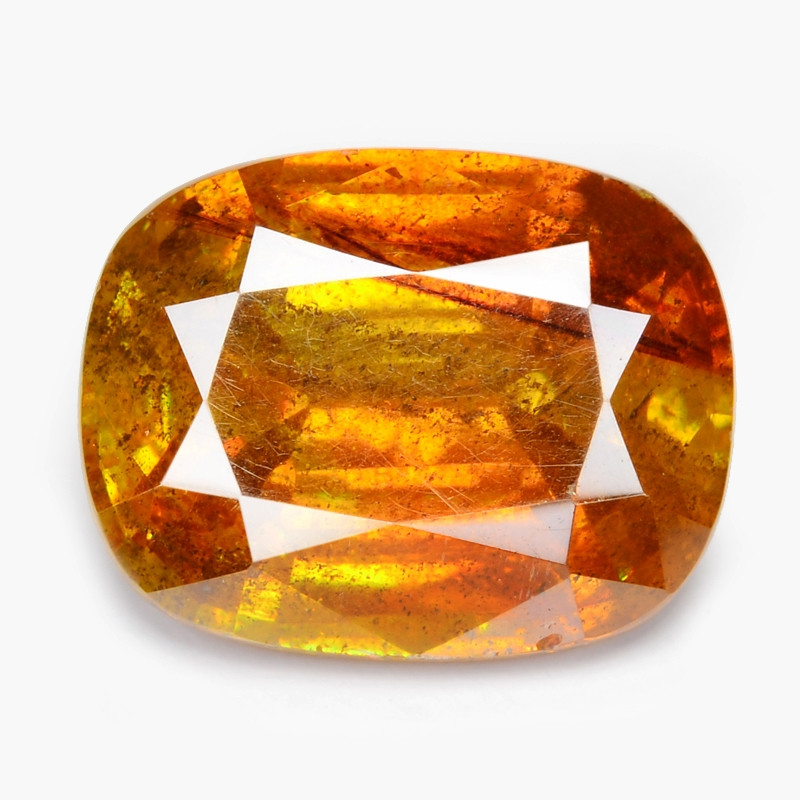
Twa
Sphalerite aboɔden abo a ɛyɛ den no di kan koraa. Sɛ wɔde sphalerite ne nea ɛyɛ mmerɛw ne nea ɛpaapae pɛpɛɛpɛ ka ho a, ɛyɛ aboɔden abo a ɛyɛ den sɛ wobetwa. Enti, ɛtaa ba sɛ raw, collector’s specimen.
Aboɔden abo a wɔatwitwa ho abenfo a wɔbɔ mmɔden sɛ wɔbɛyɛ no taa paw afã horow a wɔatwitwa de ada nyansa adi, te sɛ ɔpepepem pii, kurukuruwa, ne ntama.
Ɛtɔ mmere bi a, sphalerite ne wurtzite, aboɔden abo a ɛwɔ nneɛma koro nanso ɛsono ahwehwɛ nhyehyɛe no bom. Abo abien no hyehyɛ mu ma ɛbɛyɛ schalenblende, a ɛtɔ mmere bi a wotwa no sɛ cabochons .

Ɛda adi pefee
Nea emu da hɔ susuw nneɛma a wɔde ka ho wɔ aboɔden abo mu. Sphalerite yɛ Type III wɔ kɔla aboɔden abo a emu da hɔ nsenia so , a ɛkyerɛ sɛ ɛkame ayɛ sɛ bere nyinaa wubetumi de aniwa ahu no a nneɛma a wɔde aka ho. Sphalerites nketewa nkutoo na ebetumi ayɛ sɛ nea wɔmfa nka ho.
Sphalerite nsaano nkyerɛwee a ɛpete no da adi kɛse wɔ nhwɛsode ahorow a wɔmfa nka ho pii mu, enti abo a wɔntaa nhu a emu da hɔ yiye no hyɛ sɛ wɔmfa nneɛma bo nkɔ soro.
Carat Mu duru
Wɔbu sphalerite aboɔden abo biara a ɛboro carat abiɛsa so kɛse, titiriw nea ɛyɛ borɔdɔma ne kɔkɔɔ. Sphalerites nketewa kɔla biara nyɛ nea ɛsom bo saa.
Sphalerite rough betumi ayɛ kɛse. Sɛ nhwɛso no, Spain yɛ abo akɛse a ɛyɛ mmerɛw a ɛwɔ anim, a ɛkɔ soro kodu karat 100. Mexico nso yɛ sphalerite nneɛma pa a wɔayɛ no afã horow ayɛ abo a ne kɛse yɛ carat 50.
Nneɛma a wɔde yɛ nneɛma
Synthetic sphalerite abu so ma nyansahu mu nhwehwɛmu ne aboɔden abo atirimpɔw te sɛ decor ne agude. Esiane sɛ abɔde mu sphalerite yɛ mmerɛw nti, nea wɔayɛ no ma wonya nneɛma ahorow pii wɔ sphalerite agude a wobetumi apaw mu.
Sɛ yɛhwɛ abɔde mu sphalerite a, ɛyɛ dɛn na ɛba?
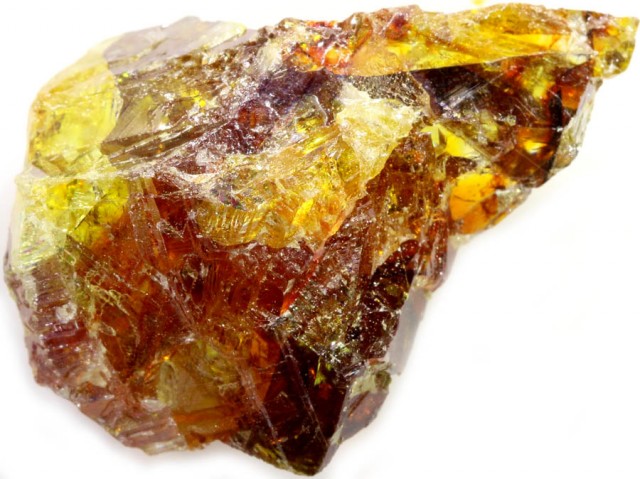
Sphalerite a Wɔhyehyɛ & Nneɛma a Wɔde Yɛ Adwuma
Sphalerite tumi nam akwan horow pii so na ɛba. Nneɛma ahorow a wɔtaa de sie a wɔde hwehwɛ sphalerite ne:
zinc-lead (SedEx) a ɛwɔ nsuo mu, .
ogya bepɔw mu sulfide (VHMS) a ɛwɔ hɔ kɛse, ne
kɔbere-zinc a wɔde carbonate ahyɛ mu.
SedEx ne VHMS a wɔde asie no wɔ nsu ase. SedEx a wɔde asie no ba wɔ po ase mframa a ɛkɔ mu no so; VHMS a ɛwɔ hɔ no, a efi ogya bepɔw abotan a ɛwɔ nsu ase mu.
Ɛtɔ mmere bi a, sphalerite ba bere a asase ase nsu a ɛyɛ hyew anaa magma sesa abotan a carbonate wom no, na ɛde nsu a zinc pii wom ba no.
Nsu a ayow no hwe ase kɔ abotan mu anaasɛ ɛsesa carbonate abotan no afã horow (“abotan a ɛgye no”), afei ɛyɛ den ma ɛbɛyɛ sphalerite. Adeyɛ a wɔde si carbonate abotan afã horow ananmu no abu so wɔ kɔbere-zinc a wɔde asie, anaa “Mississippi-Valley-type” (MVT) a wɔde asie no mu.
Nneɛma a atwa yɛn ho ahyia ne tebea horow betumi asesa sɛnea sphalerite no te. Sɛ nhwɛso no, ɔhyew a ɛkɔ soro taa ma dade a ɛwɔ mu no dɔɔso (sɛ dade wɔ nea wɔde asie no mu a).
Sɛ ɛba wie a, ɛmfa ho ɔkwan a wɔfa so yɛ no, ɛhe na wohu sphalerite?
Mmeae a Wɔtu Tuo
Aman du du pii yɛ sphalerite. Ebia Spain ne ɔman a wonim no yiye sɛ ɛyɛ nneɛma, na wotu ahwehwɛ akɛse a ɛyɛ papa a ɛyɛ sphalerite a ɛyɛ mmerɛw, kɔkɔɔ-akutu kosi toffee-brown.
Mprempren wɔn a wɔyɛ sphalerite a ɛyɛ aboɔden abo kɛse ne:
Australia
Bolivia
Canada
China
Czech Republic na ɛwɔ hɔ
Democratic Republic a ɛwɔ Congo no
England
India
Ireland
Kazakhstan na ɛwɔ hɔ
Mexico
Peru
Romania na ɛwɔ hɔ
Scotland
Sweden
USA (Mississippi Asubɔnten bon mu mantam titiriw) .
Afei, sphalerite bo yɛ ahe?
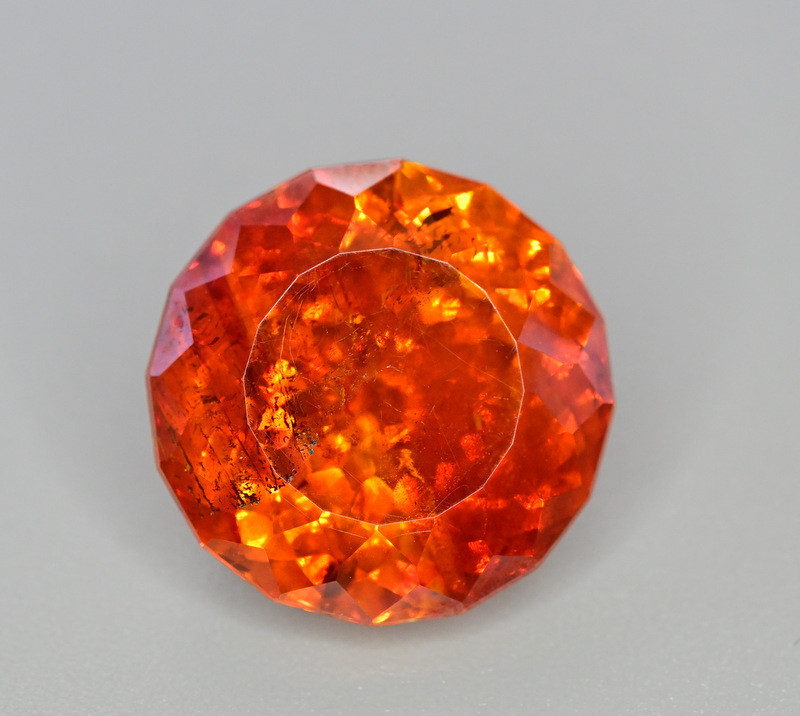
Sphalerite Bo & Ne Bo
Nea edi kan koraa no, so sphalerite bo yɛ den? Sphalerite aboɔden abo betumi ayɛ nea ne bo yɛ den, nanso egyina nneɛma a ɛyɛ papa so. Sɛ yɛka ne nyinaa bom a, sphalerite aboɔden abo no bo fi $20-$200 wɔ carat biara mu.
Abo a ne bo yɛ den sen biara no yɛ nea ɛda adi pefee, ɛnyɛ nea ɛka ho koraa, ɛboro carat abiɛsa, na ɛyɛ kɔkɔɔ-akutu a ɛyɛ mfinimfini. Saa aboɔden abo a ɛyɛ fɛ yi betumi ayɛ $200 wɔ carat biara mu nanso mpɛn pii no ɛyɛ bɛyɛ $70-$100 wɔ carat biara mu.
Nanso, nimdeɛ a ehia na wɔde ayɛ facet sphalerite kyerɛ sɛ faceted sphalerites nyinaa hyɛ sɛ ne bo nkɔ soro sen nea ɛyɛ mmerɛw anaasɛ enni facet. Sɛ wɔkyekyem pɛpɛɛpɛ a, sphalerite a ne kɛse yɛ karat biako na ɛyɛ kɔkɔɔ-biribiri tuntum a ɛwɔ anim no bo bɛyɛ dɔla 65 wɔ karat biara mu. Aboɔden abo a ɛyɛ kɔkɔɔ anaa borɔdɔma-kɔla kɔkɔɔ a ɛwɔ ntam no yɛ $90-$100 wɔ carat biara mu.
Sphalerite cabochons a ne bo yɛ kɛse no fi $15-$50 wɔ carat biara mu. Ɛde besi nnɛ no, nea ne bo yɛ den sen biara ne sphalerite rough , a ne bo yɛ $0.40-$1.50 wɔ carat biara mu.
Esiane sɛ sphalerite bo yɛ den nti, wobɛpɛ sɛ wohwɛ hu sɛ wo aboɔden abo no bɛtra hɔ akyɛ.

Sphalerite Hwɛ ne Nsiesiei
Aboɔden abo a wɔhwɛ so no ma ɛyɛ fɛ na ɛma ɛtra hɔ kyɛ sɛnea ɛbɛyɛ yiye biara. Sphalerite 3.5-4 hardness ranking kyerɛ sɛ ofie mfutuma mpo (wɔ 7 hardness) betumi asɛe no. Enti, yɛkamfo kyerɛ sɛ wɔmfa sphalerite pendants anaa brooches nhyɛ sphalerite ring so.
Sɛ wopɛ sɛ wohohoro sphalerite ho dwoodwoo a, fa brɔs a ɛyɛ mmerɛw, samina a ɛnyɛ den, ne nsu a ɛyɛ hyew di dwuma. Hohoro samina a aka no nyinaa fi ɔbo no mu, afei ma mframa nwo.
Sɛnea ɛbɛyɛ a worensɛe no, kwati sɛ wode wo sphalerite bɛto ɔhyew a ɛkɔ soro ne nnuru a ɛwɔ fie (te sɛ nneɛma a wɔde tew ho, nnuru a wɔde petepete ti nhwi, nnuhuam, ne nea ɛkeka ho) mu.
Yi wo sphalerite agude no ansa na woayɛ apɔw-mu-teɛteɛ biara a emu yɛ den. Fa aboɔden abo a wɔde ntama a ɛyɛ mmerɛw abɔ mu no sie ade a wɔde ntama ayɛ mu a ɛne aboɔden abo afoforo ntam kwan ware.
Sphalerite Aboɔden abo a ɛyɛ nwonwa?
Sphalerite yɛ aboɔden abo a ɛsom bo wɔ akwan pii so — ma mfiridwuma mu dwumadie, ahwehwɛ ayaresa, ne nokwarem no, agude a ɛyɛ fɛ. Ɛsɛ sɛ obiara a ɔboaboa aboɔden abo ano anaa n’ani gye ho no nya aboɔ a ɛyɛ kɔla na ɛhyerɛn yi mu baako wɔ wɔn nneɛma a wɔaboaboa ano no mu!
搜尋Gemstone Encyclopedia
相關拍賣
相關文章
Mfiase no na wɔde Awo Abo anaa aboɔden abo no bata nsoromma mu hwɛ anaa ɔsram a ankorankoro bi awo ho. Hwehwɛ nea wo bo no yɛ na hwɛ abo a yɛwɔ sɛ yɛtɔn no
8th Feb 2021
Hackmanite yɛ sodalite aboɔden abo a ɛyɛ pink kosi violet a wonim no sɛ ne kɔla-sesa ne hann soronko. Sua nea enti a hackmanite yɛ soronko, efi ne su ahorow a ɛntaa nsi so kosi hackmanite agude ahorow a ɛwɔ hɔ so.
28th Mar 2018
Amber yɛ tete dua a wɔatutu fam ayɛ, a mpɛn pii no afifide wɔ mu, a ɛtaa yɛ kɔkɔɔ-akutu na ɛyɛ mfe mpempem pii. Sua amber abakɔsɛm, ne bo, ne ne su!
8th May 2018
最新的文章
Nnua a wɔde asonse a wɔasen a wɔsan frɛ no nhabannuru asonse no yɛ abɔde mu ade a wɔde si asono asonse ananmu, na wotwa fi Amerika Kesee Fam phytelephas nnuadewa mu nnuadewa mu wɔ abrabɔ pa mu. Sua mmɛw asonse ho ade nyinaa wɔ akwankyerɛ yi mu!
15th Jan 2026
Chrysanthemum nhwiren abo yɛ abɔde mu anwonwade a ɛwɔ calcite, celestite, anaa andalusite nhwiren fitaa bi a wɔde asisi limestone tuntum anaa atɛkyɛ abo so.
13th Jan 2026
Rainbow lattice sunstone yɛ feldspar ahorow a ɛwɔ optical nsunsuanso abiɛsa fɛfɛ a efi nneɛma ahorow a wɔde ka ho a ɛwɔ hɔ no mu ba. Ɛyɛ ogya kɔla display ne lattice nsusuwso ma ɛyɛ coletor abohene a wɔntaa nhu!
12th Jan 2026
文章類別
How To's is where you will find helpful articles from gem Rock Auctions on how to cut gemstones, select gemstones and buy gemstones.
9文章


![COLOURFUL FLUORIDE FISH CARVING LARGE 82.5CTS [MGW316]](https://liveplatforms-production.b-cdn.net/tenants/gr/uploads/images/20000-24999/20188/20188_1.jpg?width=480&aspect_ratio=1001%3A1000)


